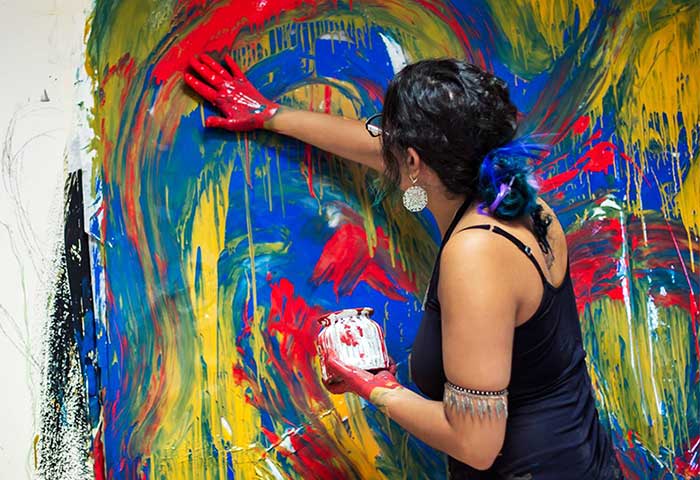[ad_1]
Sgraffito is a painting technique where two layers of paint are put down and the artist scratches the top layer to reveal the layer beneath it. This technique is not just limited to painting: it’s been used in wall decor and pottery; it has been used on walls in Europe since classical times and is still a popular technique today.
How do I do it?
The sgraffito technique is quite simple to do. All you have to do is to paint one layer of paint on to a canvas, let it dry, then paint another layer of a different colour on top of it. The top layer that you’re scratching through should still be wet. You can use any sort of object for sgraffito so long as it’s capable of scratching through the paint: the ‘wrong end’ of a paintbrush is quite good for this technique, for example. Artists also use palette knives or even their fingernails to do the scratching.
Do I need to have two layers of paint?
You don’t have to use two layers of paint with this technique. You could simply apply one layer of paint to the canvas, then scratch through that to reveal the canvas beneath it. Some artists even apply three layers of paint – each a different colour – then scratch through to reveal the colour of the middle and bottom layers.
What if I just want to practice?
With sgraffito you need to have good hand-eye coordination so you don’t make mistakes. The good thing is that there is a way you can practice to build up your skills. Use oil pastels for the first layer, then for the top layer use black ink. Scratch away at the black ink to reveal the colours of the oil pastel layer beneath. Art school teaches often use oil pastels and black ink to teach this technique to students.
What are the effects?
You can use the sgraffito technique to create areas of contrast or to highlight particular parts of your painting. Sgraffito can also give paintings a sense of texture and depth. It’s really useful if you’re doing an intricate pattern – simply scratching away here and there can sometimes be easier than painting in tiny details. The layer you’re going to show doesn’t have to be a single colour; you can have as many colours as you want.
What to remember
The tool you use to scratch the paint shouldn’t be too sharp – this is so you don’t tear the canvas or scratch the layer of paint you’re only meant to be revealing. Make sure the layer of paint you’re going to reveal by scratching is completely dry before you paint over it. If you don’t let it dry, it’ll be harder to keep the two layers from mixing and you’ll end up scratching through both layers instead of just one. Make sure the paint on the top layer isn’t runny, so it doesn’t end up running into the grooves when you start scratching.
[ad_2]
Source

